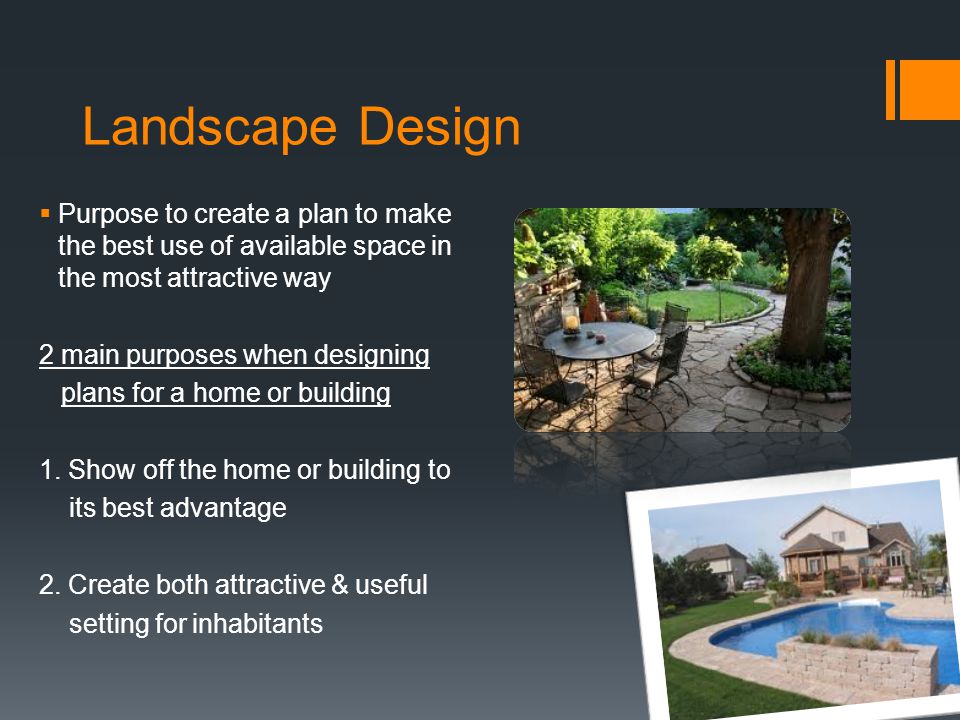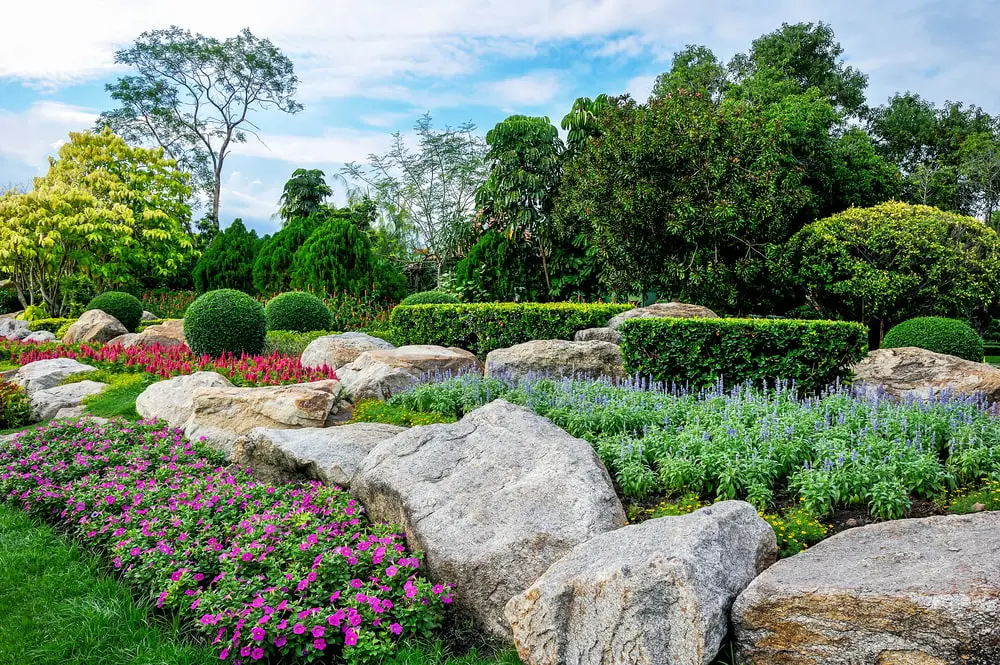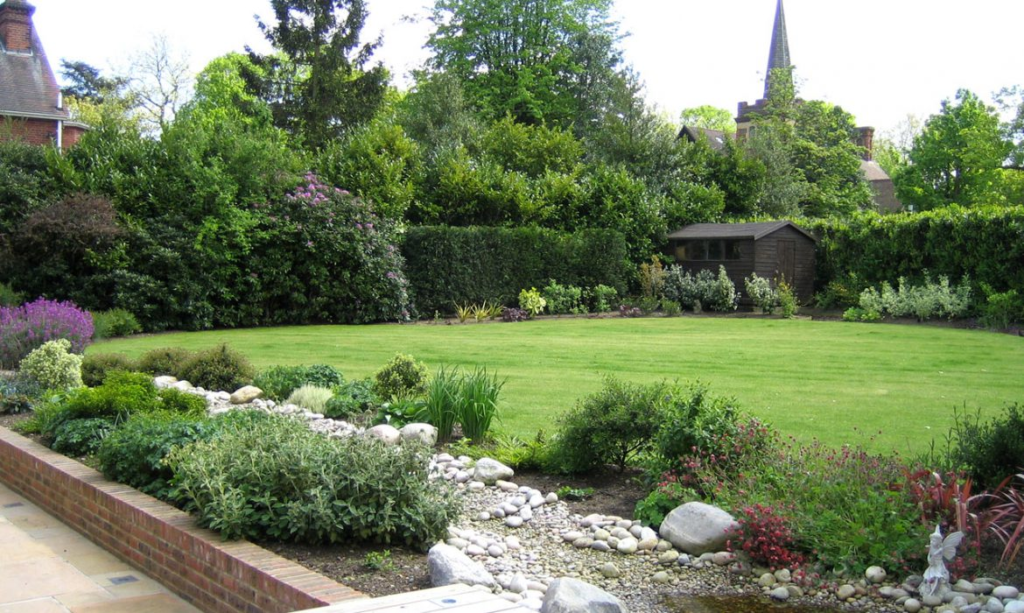The Buzz on Hilton Head Landscapes
The Buzz on Hilton Head Landscapes
Blog Article
Little Known Facts About Hilton Head Landscapes.
Table of ContentsThe Buzz on Hilton Head LandscapesHilton Head Landscapes - The FactsIndicators on Hilton Head Landscapes You Need To Know10 Simple Techniques For Hilton Head LandscapesSome Ideas on Hilton Head Landscapes You Need To KnowNot known Facts About Hilton Head LandscapesHilton Head Landscapes Things To Know Before You BuySome Known Incorrect Statements About Hilton Head Landscapes
Kind compatibility is likewise a significant component of unity in designone or 2 noticeably various kinds are good for comparison and emphasis, however usually all various other kinds should have some resemblances for an unified appearance. Texture describes how rugged or fine the surface of the plant or hardscape material really feels and/or looks.
Instances of plants with coarse texture include philodendrons, agaves, bromeliads, hollies, hands, and hydrangeas. Features that produce fine structure consist of small vegetation; slim, strappy leaves (turfs) or tall, slim stems; little, thick branches and small branches; long stems (vines); and tiny, delicate flowers.
The Only Guide to Hilton Head Landscapes
Most plants are moderate structure, in that they can not be explained as having either rugged or fine structure. Medium-textured plants act as a background to link and merge the crude- and fine-textured plants.

To make an area really feel smaller sized, position the crude appearances along the external border and the great appearances closest to the viewer. The detail of the rugged texture makes the plants appear closer and makes the area feel smaller. The viewed structure of plants can also transform with the range from the plant.
The Best Guide To Hilton Head Landscapes
Bold shades boost the contrast and make the texture show up coarser, while soft colors can squash structure. Hardscape with a coarse texturesuch as very harsh rocks and bold, huge timberstends to make all plant material appear a lot more medium distinctive. Designers typically create an appearance research study (Figure 8) theoretically to help decide the plan of plant materials.
Shade in plant material and hardscape includes rate of interest and variety to the landscape. Color is the most conspicuous element in the landscape and is generally the focus of most house owners; however, it is likewise the most short-lived element, normally lasting just a few weeks a year for private plants.
Get This Report on Hilton Head Landscapes
A straightforward summary of the shade wheel consists of the 3 key colors of red, blue, and yellow; the three secondary colors (a mix of 2 primaries) of environment-friendly, orange, and violet; and 6 tertiary shades (a mix of one surrounding key and second shade), such as red-orange. Color concept clarifies the partnership of shades to every other and exactly how they ought to be made use of in a make-up.

Comparable (occasionally called harmonious) color design are any type of three to five shades that are adjacent on the shade wheel, such as red, red-orange, orange, yellow-orange, and yellow, or blue, blue-violet, and violet (hilton head landscapers). The shades are related to each other since they usually consist of two main shades blended to create an additional and two tertiary colors, which indicates they share typical residential or commercial properties
Complementary shades are commonly discovered naturally in flowers; a common set is yellow and violet. Color is discovered in the blossoms, foliage, bark, and fruit of plants.
Getting The Hilton Head Landscapes To Work
Environment-friendly vegetation in all its numerous tones is the dominant color by quantity, yet other shades capture interest extra easily since of their high comparison to the color green. Color is also located in structures, rocks, pavers, wood, and furnishings. Many colors in all-natural products, such as stone and timber, are generally soft and tend to be variants of brown, tan, and pale yellow.
Shades have residential or commercial properties that can impact emotions, spatial perception, light quality, balance, and emphasis. Cool shades tend to be relaxing and need to be made use of in locations for leisure and peacefulness.
Not known Details About Hilton Head Landscapes
The "temperature level" of colors can additionally influence the perception of range. Cool colors have a tendency to decline and are perceived as being further away, making an area feel larger. Cozy colors have a tendency to advance and are regarded as being closer, making a room really feel smaller sized. Color can also be utilized to catch interest and straight sights.
For instance, intense yellow, which has the highest possible strength, additionally has a high comparison with all other colors (frequently defined as a "pop" of color) and need to be conserved. A percentage of extreme color has as much visual weight as a big quantity of a more controlled or weak shade.
Analogous (often called harmonious) color design are any kind of three to five shades that are nearby on the shade wheel, such as red, red-orange, orange, yellow-orange, and yellow, or blue, blue-violet, and violet. The colors are related to every other because they commonly include 2 primaries mixed to form an additional and 2 tertiary colors, which means they share typical homes.
Hilton Head Landscapes for Dummies
They tend to have high comparison between them. One of the most typical collections are violet and yellow, red and green, and blue and orange. Corresponding shades are typically found normally in flowers; an usual pair is yellow and violet. Shade is located in the flowers, foliage, bark, and fruit of plants.
Eco-friendly foliage in all its numerous shades is the dominant shade by quantity, yet other colors record interest quicker as a result of their high comparison to the color environment-friendly - hilton head landscapers - https://moz.com/community/q/user/h1tnhdlndscps?_=1719959081810. Shade is additionally found in buildings, rocks, pavers, timber, and furnishings. Many shades in natural materials, such as rock and wood, are generally low-key and have a tendency to be variations of brown, tan, and light yellow
Not known Details About Hilton Head Landscapes
Shades have residential properties that can impact feelings, spatial perception, light top quality, balance, and emphasis. Cool colors tend to be relaxing and must be used in locations for leisure and calmness.
The "temperature level" of shades can likewise impact the assumption of range. Trendy shades often tend to decline and are viewed as being further away, making a room really feel bigger. Warm colors often tend to breakthrough and are regarded as being more detailed, making an area feel smaller. have a peek at these guys Color can additionally be made use of to record interest and direct views.
For instance, brilliant yellow, which has the highest intensity, additionally has a high contrast with all other shades (often called a "pop" of color) and should be conserved. A percentage of extreme color has as much visual weight as a large quantity of a more restrained or weaker color.
Report this page